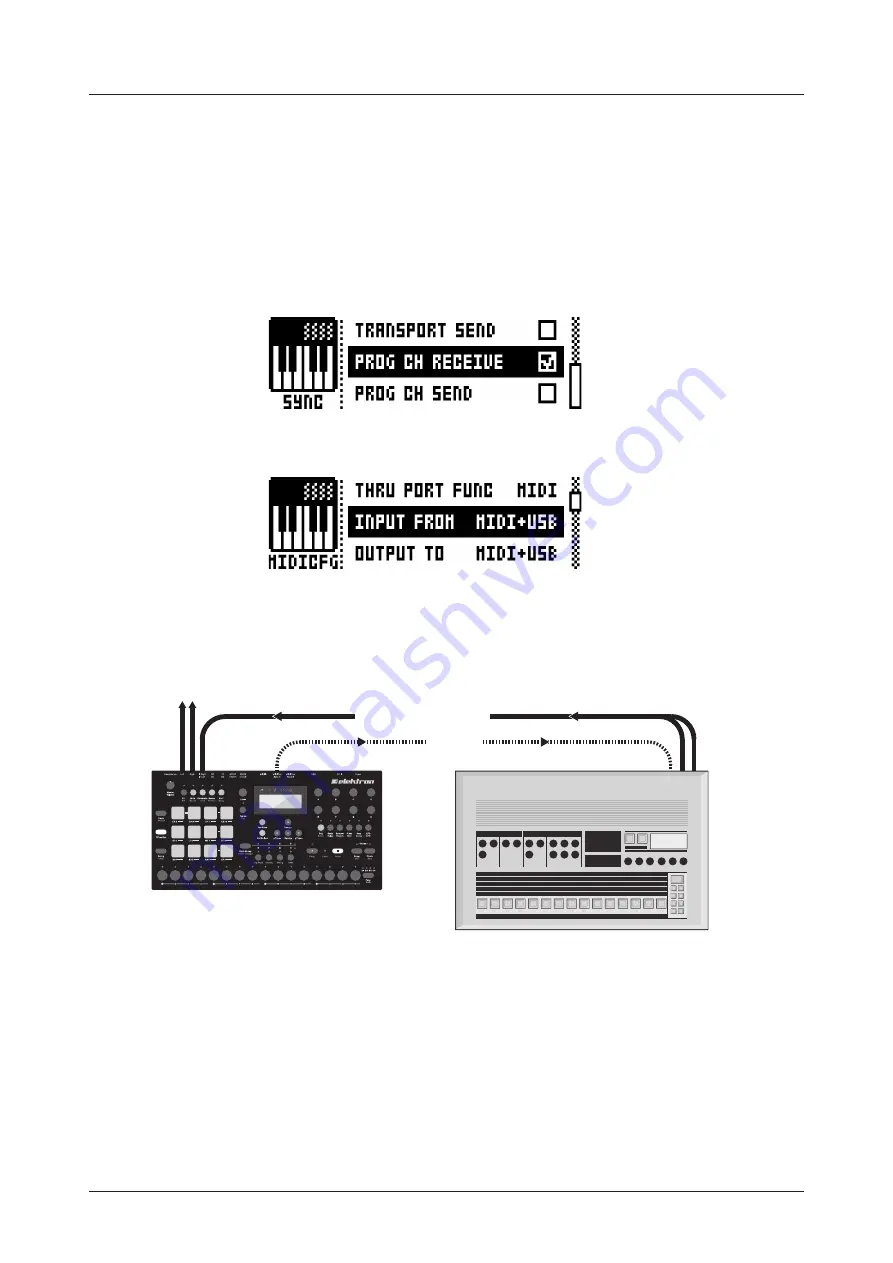
15. SETUP EXAMPLES
63
Analog Rytm gets along with other broods of the Elektron breed. Here, it is used with an Octatrack and an
Analog Keys.
In this example, the Analog Rytm creates the beats. The Analog Keys is used for bass and synth sounds.
The Octatrack plays back loops and samples the audio from the Analog Rytm and the Analog Keys.
1. Connect the Analog Rytm main outputs to the Analog Keys inputs, the Analog Keys main outputs to one
of the input pairs of the Octatrack, and the main outputs of the Octatrack to the PA. Use standard phone
connectors.
2. Make sure the Analog machines are MIDI slaved to the Octatrack using two standard MIDI cables.
3. On the MIDI configuration menu, found in the GLOBAL menu on the Analog Rytm, ensure the MIDI SYNC
has CLOCK RECEIVE, and PROG CH RECEIVE activated.
4. On the MIDI PORT CONFIGURATION menu, also in the GLOBAL menu, use the setting MIDI or
MIDI+USB for the input port.
5. Use the internal effects of the Analog Keys on the incoming signal from the Analog Rytm. Make a perfor-
mance macro on the Analog Keys controlling the desired FX parameters.
15.3 ANALOG RYTM WITH A STEREOPHONIC DRUM MACHINE
MAIN OUT TO MIXER
MONO TO STEREO SPLIT PHONE
DIN SYNC 24
Use the Analog Rytm compressor when you incorporate sounds from external instruments in your composi-
tion.
The following example shows how an old drum machine is hooked up to the Analog Rytm. The stereo out-
put from the drum machine can be compressed to fit in nicely, and its patterns started, stopped and tempo
controlled, using the Analog Rytm.
1. Prepare a rhythm pattern on your heritage drum machine.
2. Connect the stereo outputs of the drum machine to the inputs of the Analog Rytm using a mono to ste-
reo split phone cord.
3. Connect the MIDI Out of the Analog Rytm to the SYNC of the drum machine.
4. On the MIDI PORT CONFIGURATION menu, in the GLOBAL menu of the Analog Rytm, use the setting
DIN24 on the OUT PORT FUNCTIONALITY selector.






























